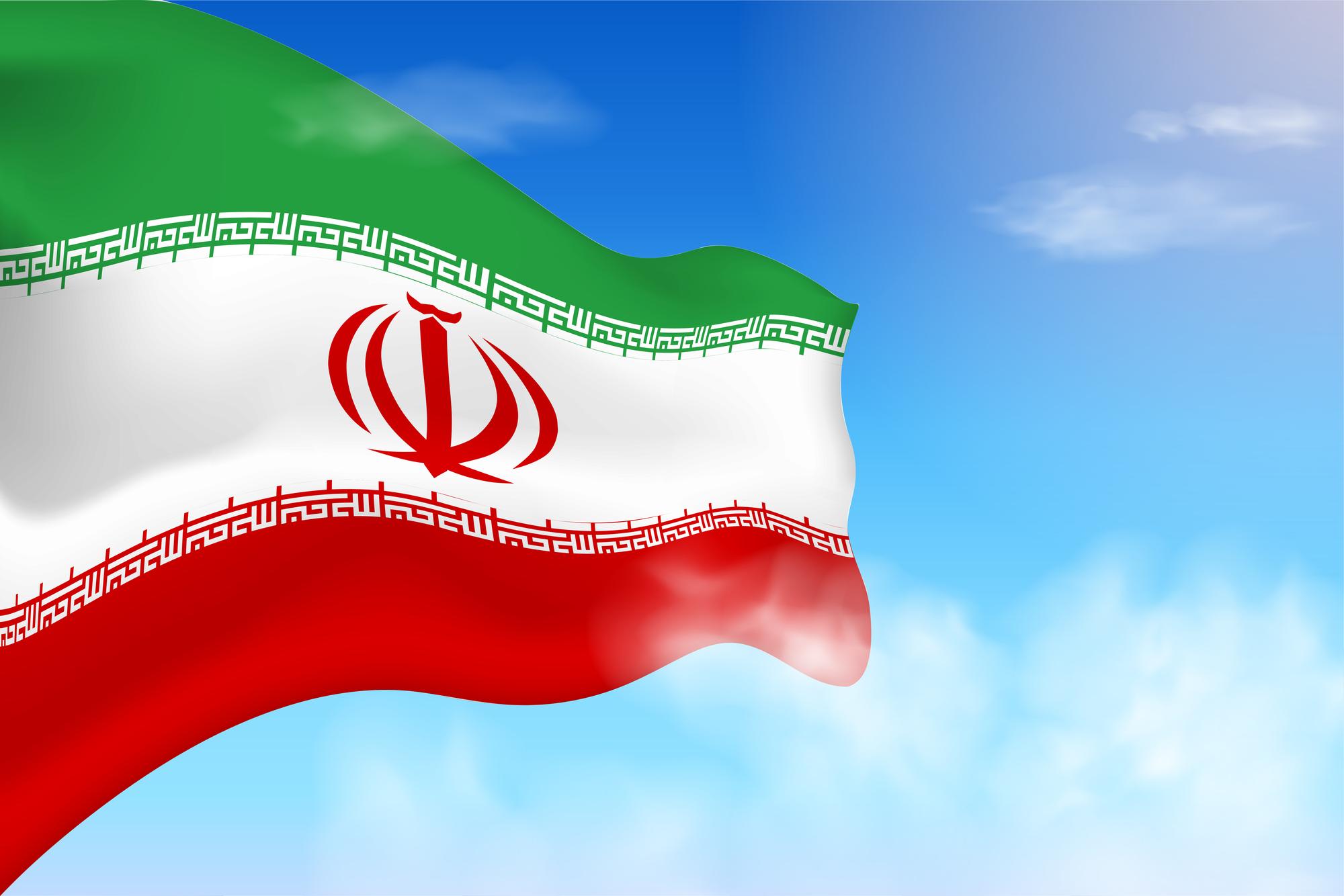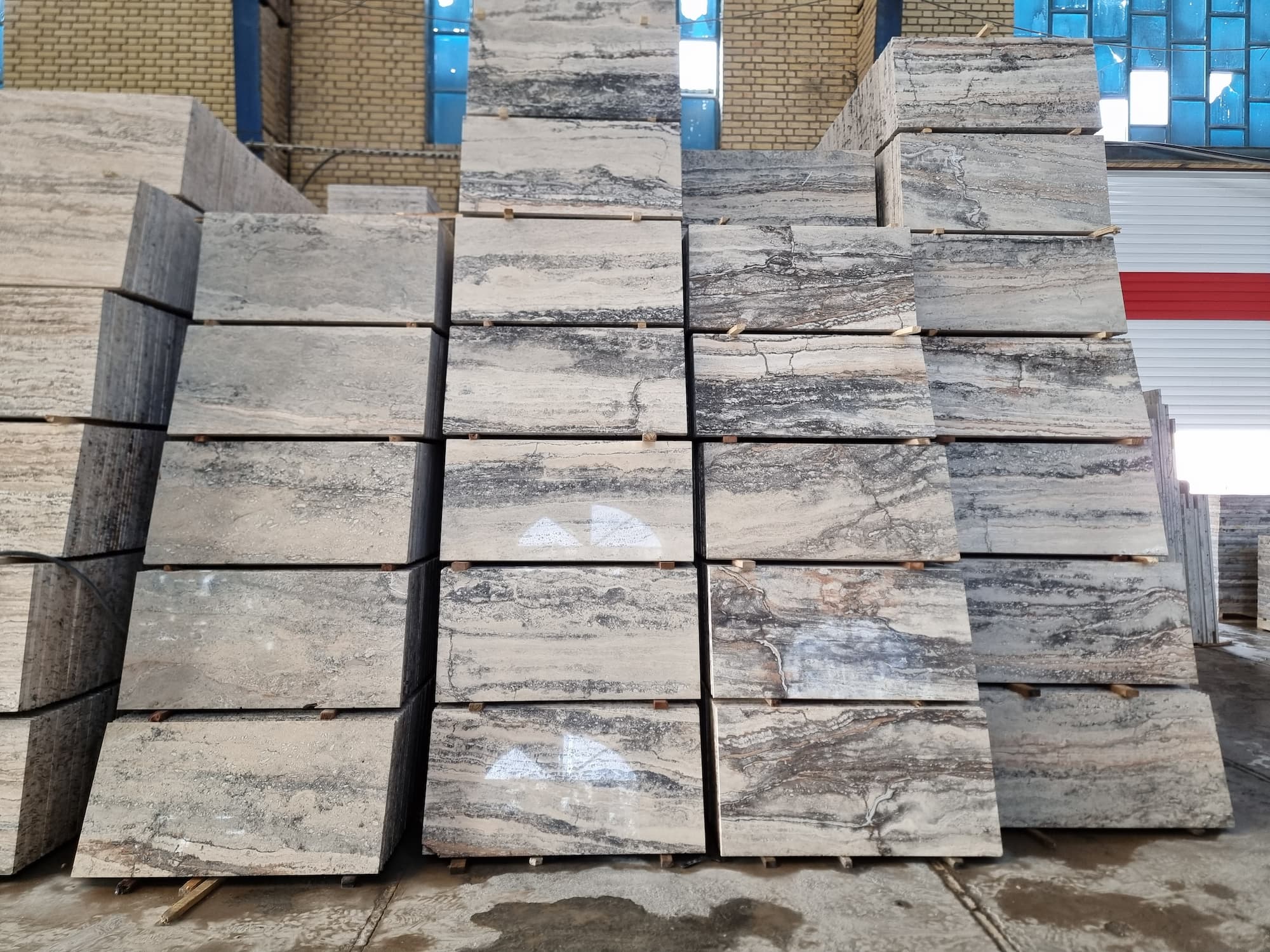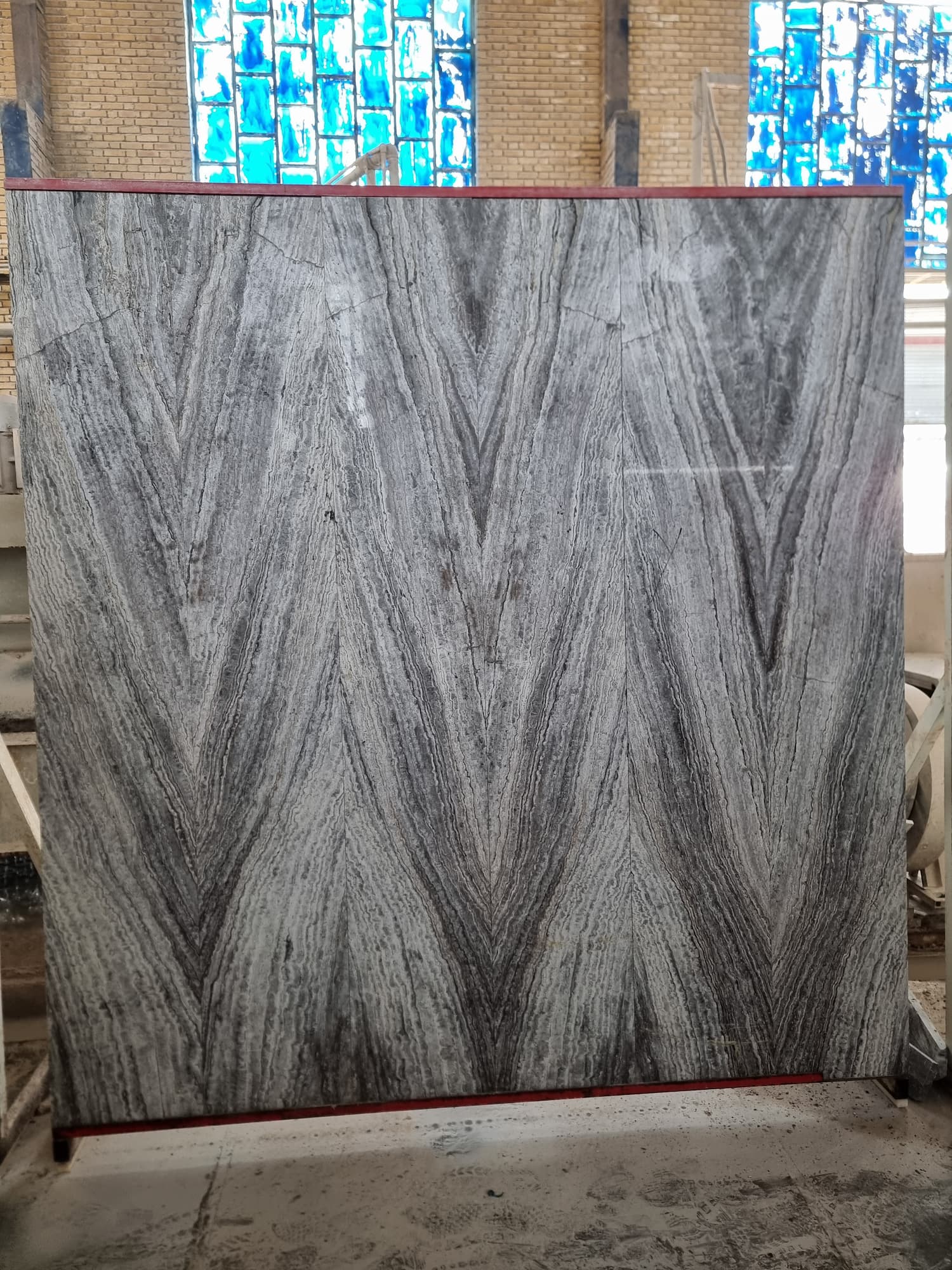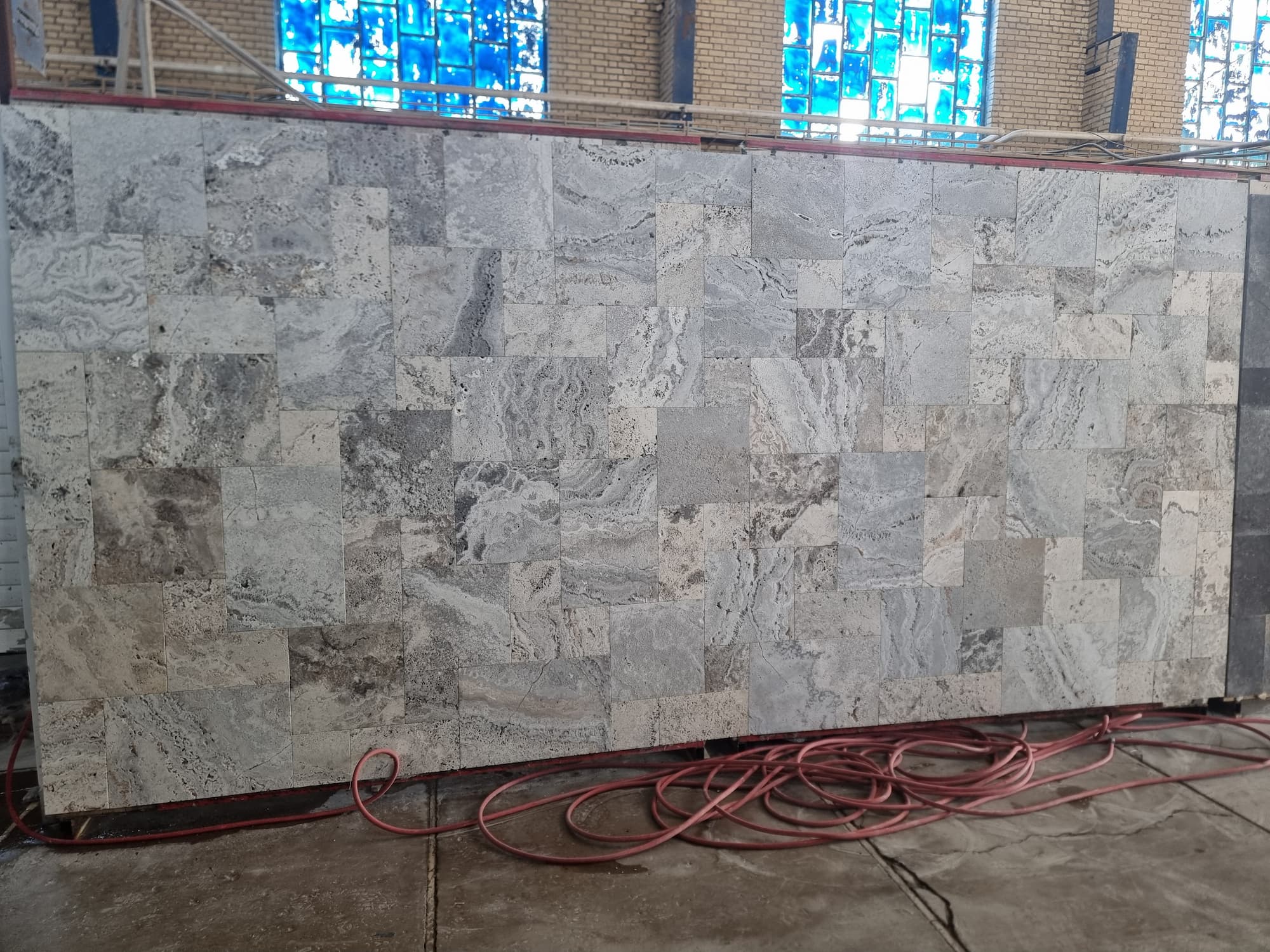Silver travertine stone has captured the imagination of architects, designers, and homeowners alike with its unique blend of elegance and durability. But where does this exquisite natural stone come from, and what sets it apart from other materials? This comprehensive guide delves into the geographical origins, formation process, origins, and mines of silver travertine stone.
Introduction to Silver Travertine Stone
Silver travertine stone, renowned for its exquisite characteristics, is a testament to nature’s artistry. This stunning natural stone is celebrated for its unparalleled beauty, versatility, and remarkable durability, making it a coveted choice in architectural and design applications. With its captivating greyish tones and intricate veining patterns, silver travertine exudes elegance and sophistication that effortlessly elevates any space it adorns. Silver travertine leaves a lasting impression with its timeless charm and enduring allure, whether used as flooring, wall cladding, countertops, or outdoor landscaping projects.
Formation Process of Silver Travertine
Travertine, including the stunning silver variant, is formed through a fascinating natural process that spans thousands of years. It begins with mineral deposition from hot springs and geysers, where calcium carbonate gradually accumulates and solidifies into layers. This process creates the distinctive porous structure and intricate veining patterns that characterize travertine stone.

Geographical Origin
Iran: Primary Source
Iran is renowned as the primary source of silver travertine, a stone prized for its exceptional quality and captivating beauty. Situated amidst the breathtaking landscapes of regions like Takab, Kashan, and Azar Shahr, Iran boasts an abundance of natural hot springs and mineral-rich waters that provide the perfect environment for forming high-quality travertine deposits. These regions serve as veritable treasure troves, yielding silver travertine with unparalleled elegance and durability. The geological processes that unfold in these areas over millennia result in travertine, characterized by its unique greyish tones and intricate veining patterns, making it a sought-after material in architectural and design circles. While Iran takes center stage as the primary producer of silver travertine, other countries like Turkey, Italy, and Mexico also boast deposits of this stone. However, Iranian silver travertine’s superior quality and consistency often make it the preferred choice among discerning buyers.
Quarrying Process of silver travertine
The extraction of silver travertine begins with quarrying, where large blocks of stone are cut from the earth using specialized equipment and techniques. Once extracted, the blocks are transported to processing facilities for further refinement.
Processing Techniques of silver travertine
The processing facility’s raw travertine blocks undergo cutting, honing, and polishing to achieve the desired finish. Some stones may also be filled with resin or epoxy to enhance their strength and appearance.

Environmental factors in the formation of silver travertine stone
Environmental factors play a crucial role in the formation of silver travertine stones. This unique natural material is primarily formed through geological processes in regions with specific environmental conditions. One of the critical factors is the presence of natural hot springs and mineral-rich waters, typically found in areas with volcanic activity or tectonic movement. These hot springs provide a source of calcium carbonate, a primary component of travertine, which is dissolved in the water and subsequently deposited onto surfaces such as rocks and cave walls. Over time, the accumulated calcium carbonate undergoes crystallization, forming layers of travertine stone. Additionally, factors such as temperature variations, pH levels, and the presence of organic matter in the water can influence the travertine’s texture, color, and veining patterns. The geological processes forming silver travertine often take thousands to millions of years, highlighting the intricate interplay between environmental conditions and geological forces.

The global distribution and trade of silver travertine stone
The global distribution and trade of silver travertine stone encompass a vast network of suppliers, manufacturers, and buyers across continents. While Iran is a primary silver travertine source, other countries such as Turkey, Italy, and Mexico contribute to its global distribution. These nations boast significant deposits of silver travertine and play pivotal roles in meeting the growing demand for this exquisite natural stone. The trade of silver travertine involves various stages, from extraction and processing at quarries and mines to transportation and distribution to international markets. International trade routes facilitate the movement of silver travertine stone from production hubs to destinations worldwide, where it is utilized in various architectural, design, and construction projects. The global distribution of silver travertine stone underscores its status as a sought-after material prized for its timeless beauty and versatility, connecting cultures and industries across the globe.

I suggest you read: Is silver Travertine stone heat-resistant?
Future Prospects: Speculating on the availability and demand for silver travertine stone.
Speculating on the future availability and demand for silver travertine stone involves considering several factors that may influence its market dynamics. While the demand for silver travertine continues to rise due to its aesthetic appeal and versatility in architectural and design applications, various factors may impact future availability. One such factor is the sustainability of mining practices, as extracting natural stone can have environmental implications. Efforts towards sustainable mining and conservation practices may influence the availability of silver travertine in the future. Additionally, shifts in global economic trends, construction activity, and design preferences could affect demand levels for silver travertine stone. As sustainable design practices gain momentum and consumer awareness of environmental issues grows, there may be a greater emphasis on using eco-friendly materials, including alternatives to natural stone. However, silver travertine’s enduring allure and timeless beauty are likely to sustain its demand in the market, with continued innovation in extraction techniques and a focus on responsible sourcing ensuring its availability for future generations.

 Marble
Marble